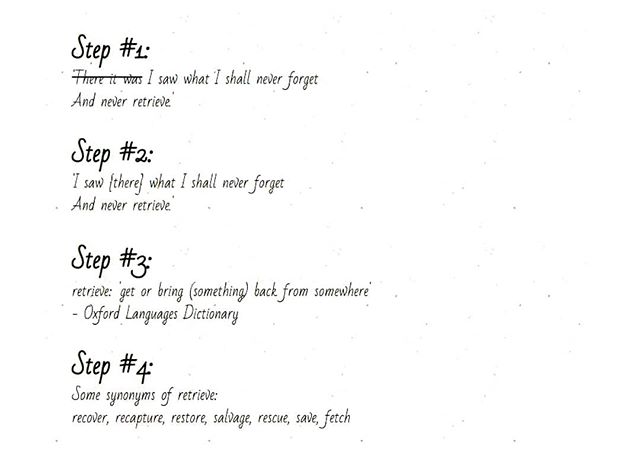INTERMEDIATE LEVEL
Mini-lesson Monday continued (part 2):
This is a demonstration of how I approached the opening line of Edna St Vincent Millay’s ‘The Fawn’ in one of my English language lessons.
I took a few simple steps to help with text comprehension, and it only took a few minutes. I’m going to tell you what we’ve done (plus an extra step).
🖋️ Step 1: Cross out or block out any group of words that initially confuses you.
Concentrate on comprehending the rest. If you need to, read it over a couple of times.
It will soon make sense!
🖋️ Step 2: Re-write the line in your own words to establish its meaning.
🖋️ Step 3: Now search for the meaning of any word that you may not understand.
In this case, the word ‘retrieve’ may have been unclear. Put simply, ‘retrieve’ means to ‘bring something back’.
🖋️ Step 4: Are there any synonyms of the word that you were unfamiliar with that might help you remember it? In this case, synonyms of ‘retrieve’ might include: ‘recover, restore, recapture, salvage, rescue (something), save (something), fetch’.
Note: ‘retrieve’ is not used to describe an action done to a person – you don’t retrieve a person, only a thing.
🖋️ Step 5: Revise or rephrase the meaning of the sentence in your own words (you could do this aloud or in writing). For example: ‘I saw something there that I will not easily forget’ or ‘I saw something there that I will always remember’.
Compare these to the poet’s line.
✍️ Do you notice any extra meaning or subtlety in its original line when you compare it to your own phrasing?
If you notice a new nuance, no matter how small, you are on the path to reading English literature and fully enjoying it.
Well done!
Do not hesitate to share with me your rephrased sentences and discoveries (you can do so via the contact form) – I look forward to reading them!




